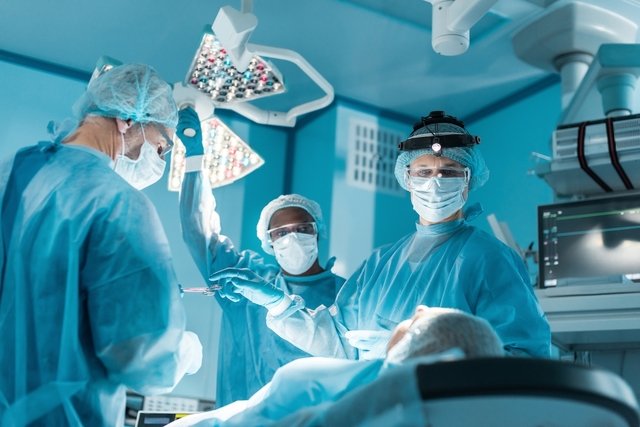Reduction mammoplasty is a surgery to reduce the size and volume of the breasts, and is recommended when a woman has constant back and neck pain or has a curved torso, causing changes in the spine due to the weight of the breasts. However, this surgery can also be done for aesthetic reasons, especially when the woman does not like the size of her breasts and her self-esteem is affected.
Generally, breast reduction surgery can be performed from the age of 18, as in most cases, the breast is already fully developed and recovery takes about 1 month, requiring the use of a bra during the day and night.
Furthermore, the results of the surgery are better and the breast becomes more beautiful when, in addition to reduction mammoplasty, the woman also undergoes mastopexy during the same procedure, which is another type of surgery and aims to lift the breast. Discover the main plastic surgery options for the breast.

How breast reduction is performed
Before performing breast reduction surgery, the doctor recommends carrying out blood tests and mammography and may also adjust the doses of some current medications and recommend avoiding medications such as aspirin, anti-inflammatories and natural remedies, as they can increase the bleeding, in addition to recommending stopping smoking for about 1 month beforehand.
The surgery is performed under general anesthesia, takes an average of 2 hours and, during the operation, the plastic surgeon:
- Makes cuts in the breast to remove excess fat, breast tissue and skin;
- Repositions the breast and reduces the size of the areola;
- Apply stitches or use surgical glue to avoid scars.
In most cases, the woman has to stay in hospital for about 1 day to check if she is stable. See also how to reduce breasts without surgery.
What is recovery like?
After surgery you may feel some pain, it is important to wear a bra with good support, both day and night, lie only on your back and take painkillers recommended by your doctor, such as Paracetamol or Tramadol, for example.
Generally, the stitches should be removed approximately 8 to 15 days after surgery and, during this time, you should rest, avoiding moving your arms and torso excessively, and not going to the gym or driving.
In some cases, the woman may also have a drain in place for around 3 days to drain any excess blood and fluid that may accumulate in the body, avoiding complications such as infection or seroma. See how to care for drains after surgery.
In the first 6 months after surgery, it is also advised to avoid heavier physical exercises, especially those that involve movements with the arms such as lifting weights or weight training, for example.
Does breast reduction surgery leave a scar?
Reduction mammoplasty can leave a small scar at the cut sites, usually around the breast, but the size of the scar varies with the size and shape of the breast and the surgeon’s ability.
Some common types of scars can be “L” shaped, “I” shaped, inverted “T” shaped or around the areola, as in the image.
Most frequent complications
The risks of reduction mammoplasty are related to the general risks of any surgery, such as infection, bleeding and reactions to anesthesia, such as tremors and headache.
In addition, there may be loss of sensitivity in the nipples, irregularities in the breasts, opening of stitches, keloid-type scars, darkening or bruising. Know the risks of plastic surgery.
Breast removal surgery in men
In the case of men, reduction mammoplasty is performed in cases of gynecomastia, which is characterized by enlargement of the breasts in men and the amount of fat located in the chest area is normally removed. Understand what gynecomastia is and how it is treated.

Sign up for our newsletter and stay up to date with exclusive news
that can transform your routine!
Warning: Undefined array key "title" in /home/storelat/public_html/wp-content/plugins/link-whisper-premium/templates/frontend/related-posts.php on line 12
Warning: Undefined array key "title_tag" in /home/storelat/public_html/wp-content/plugins/link-whisper-premium/templates/frontend/related-posts.php on line 13




